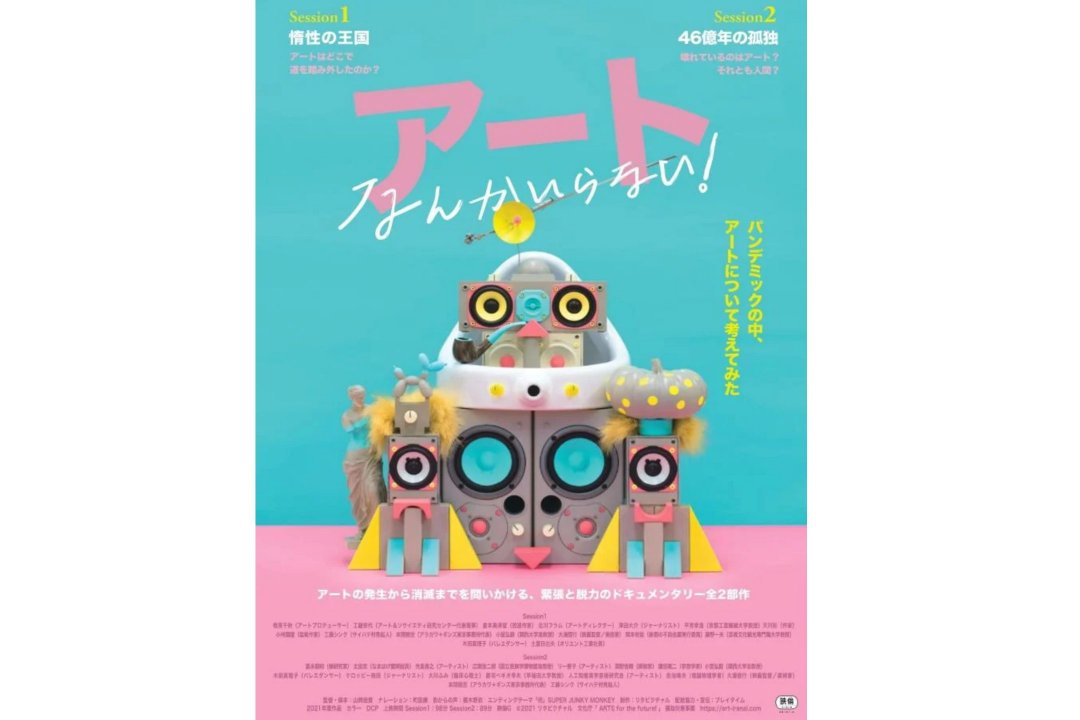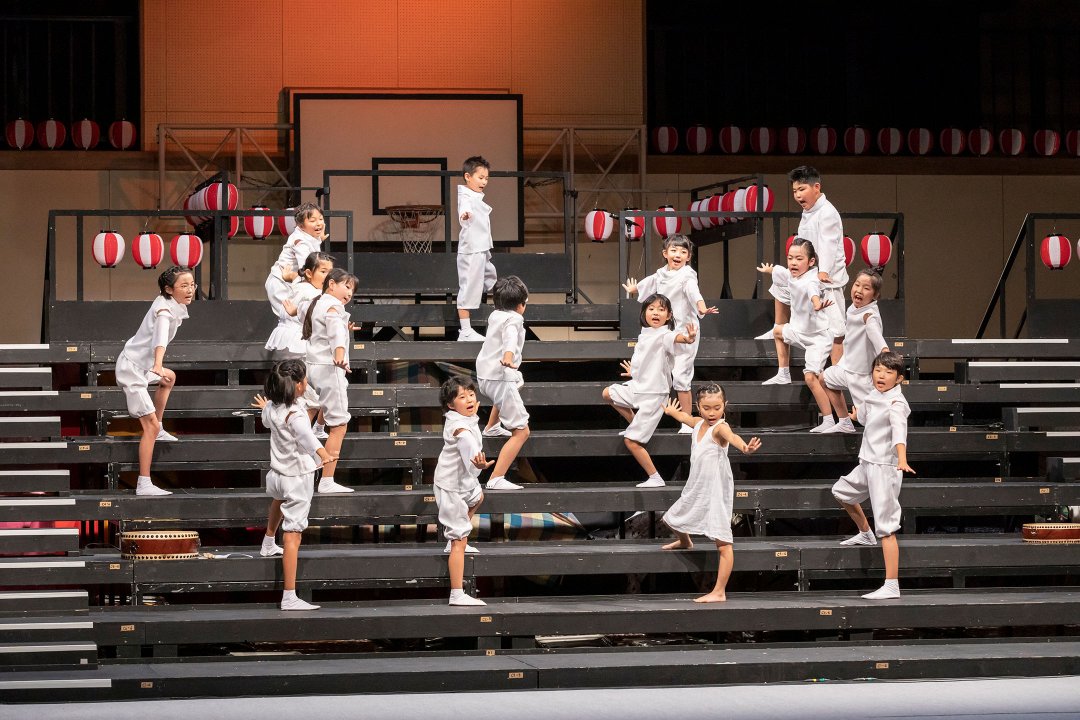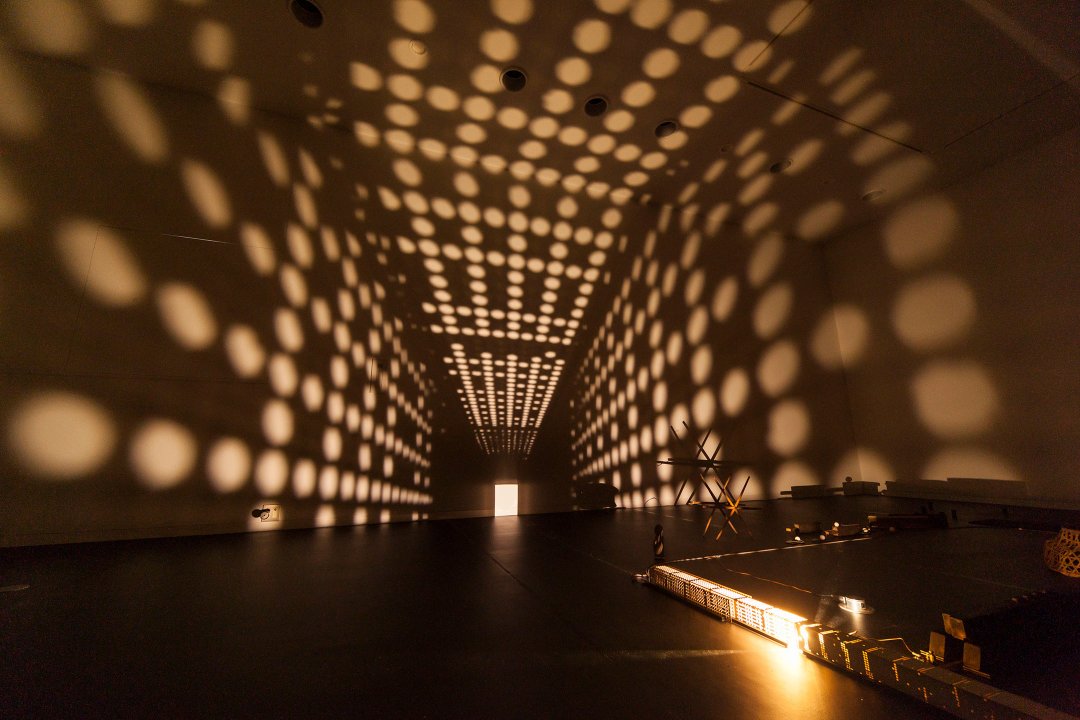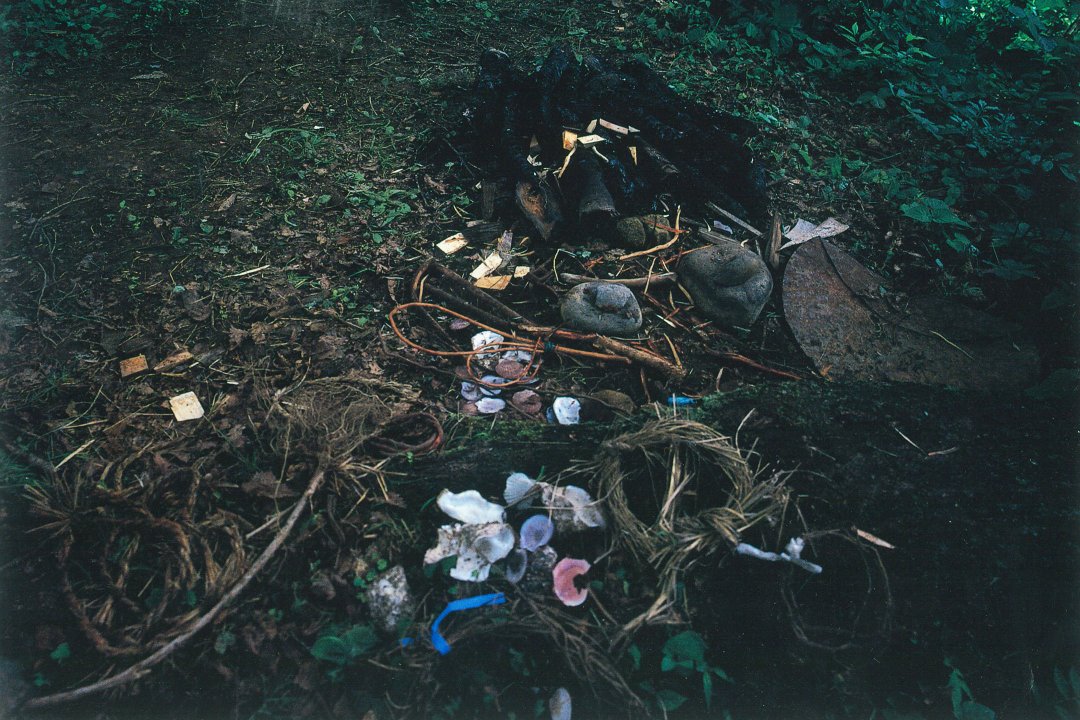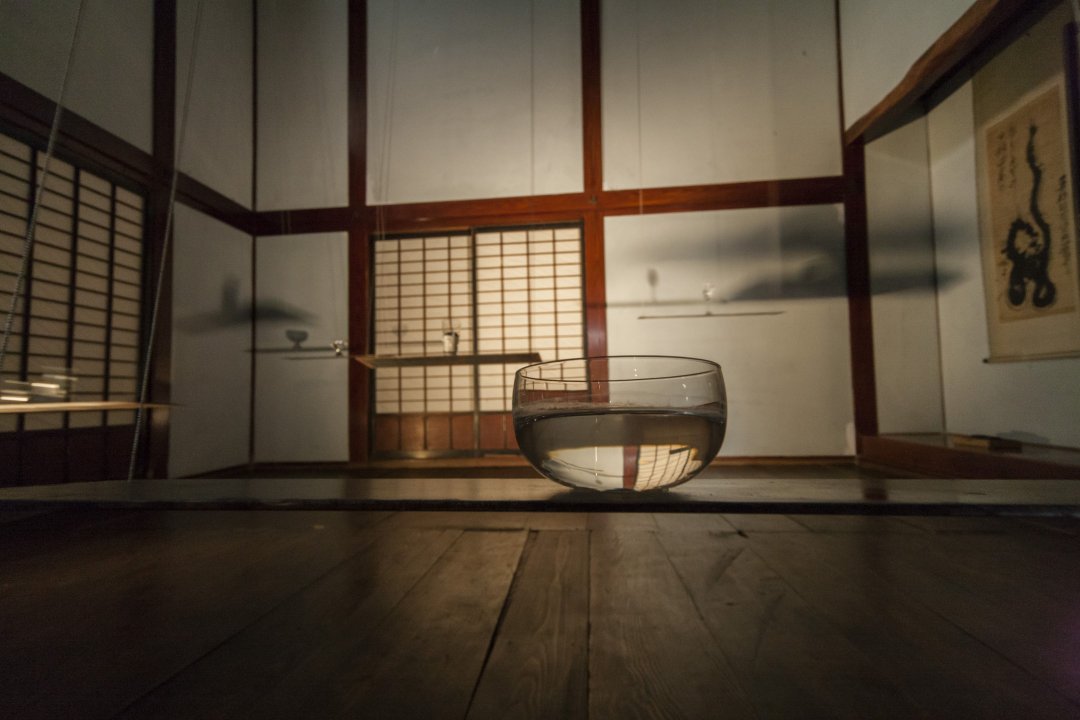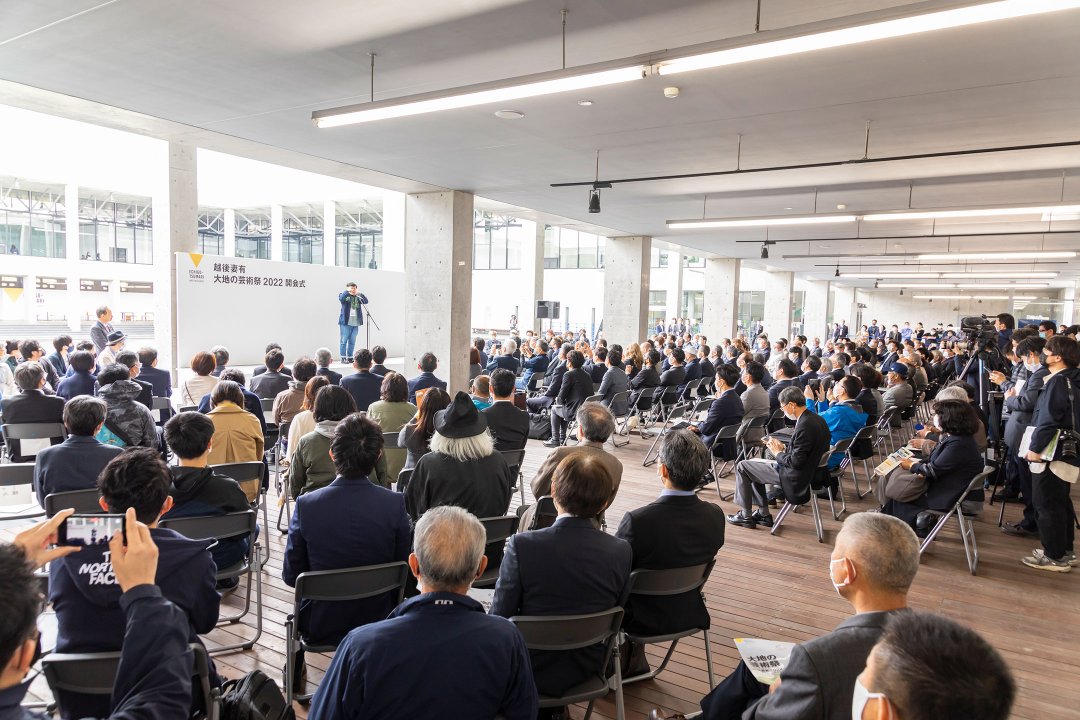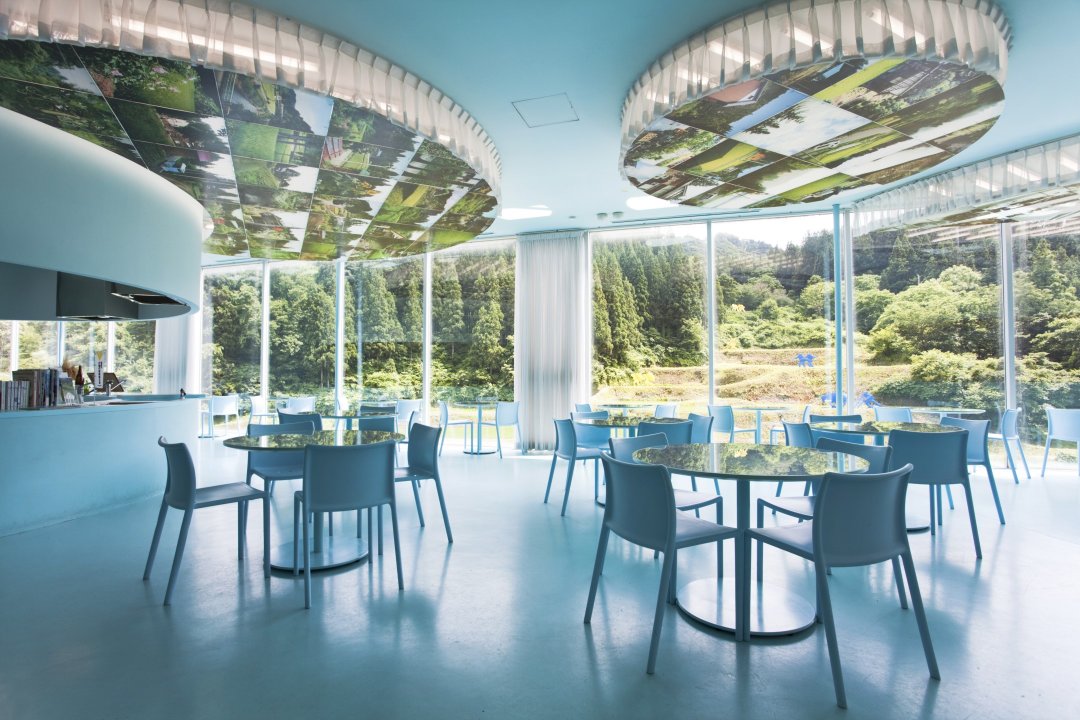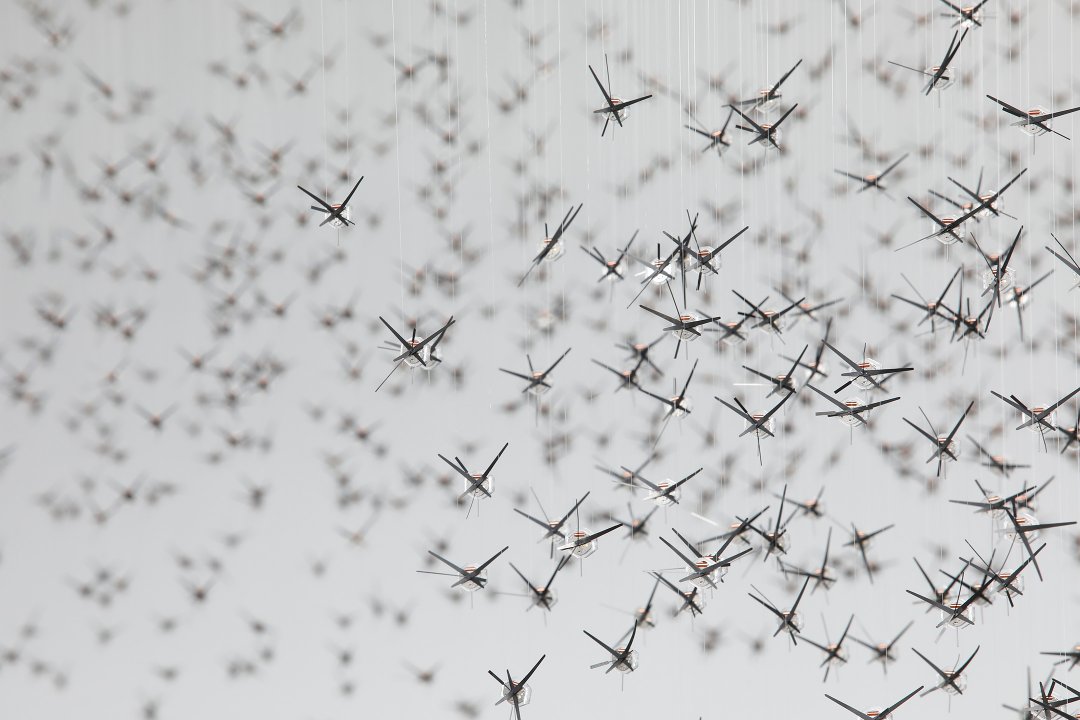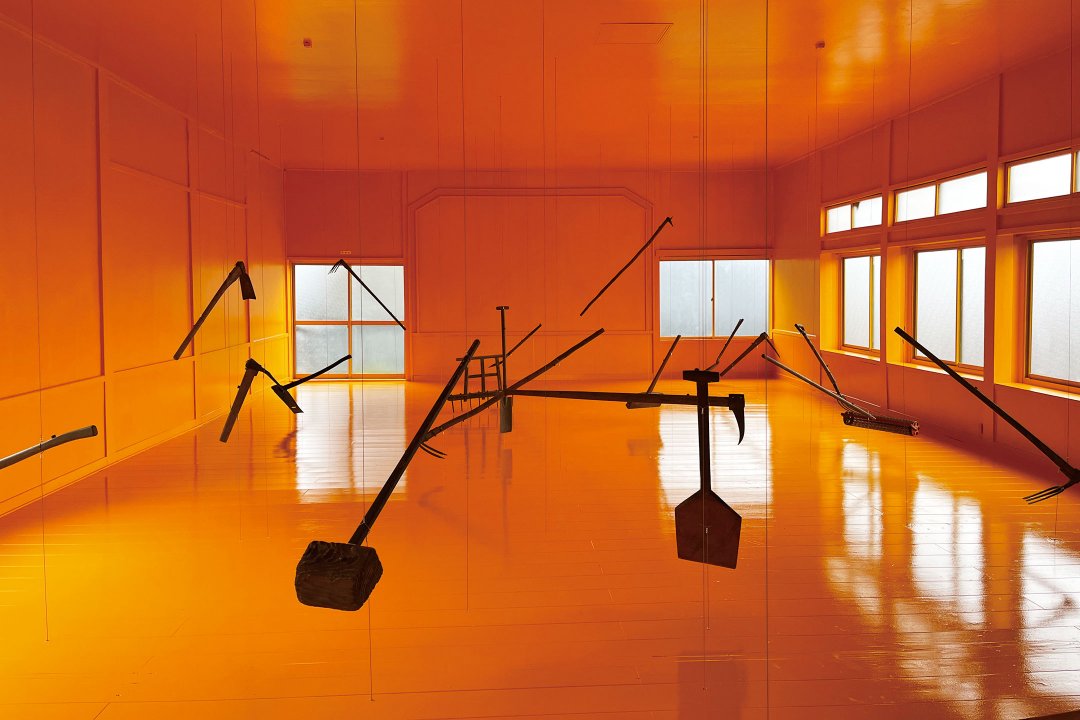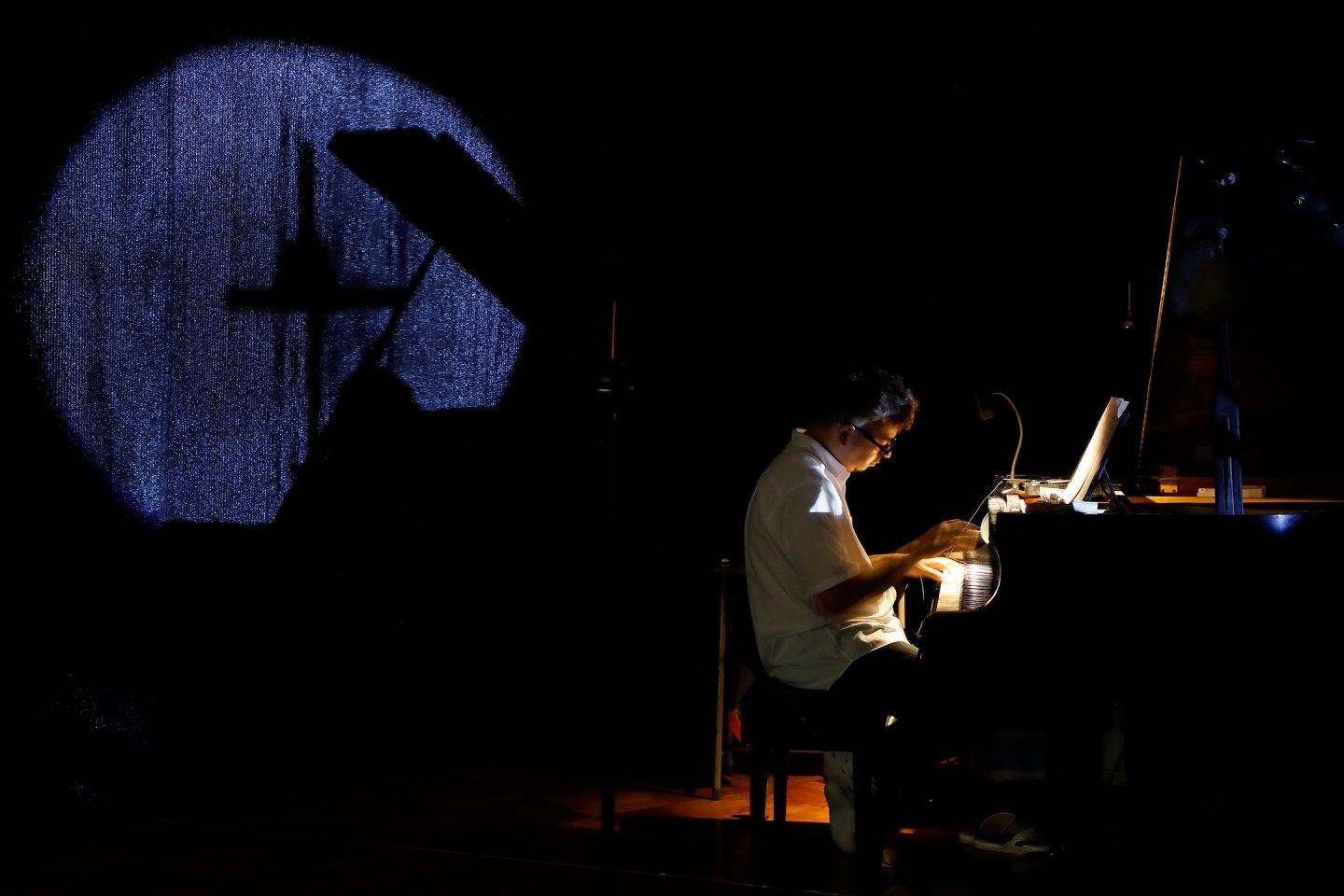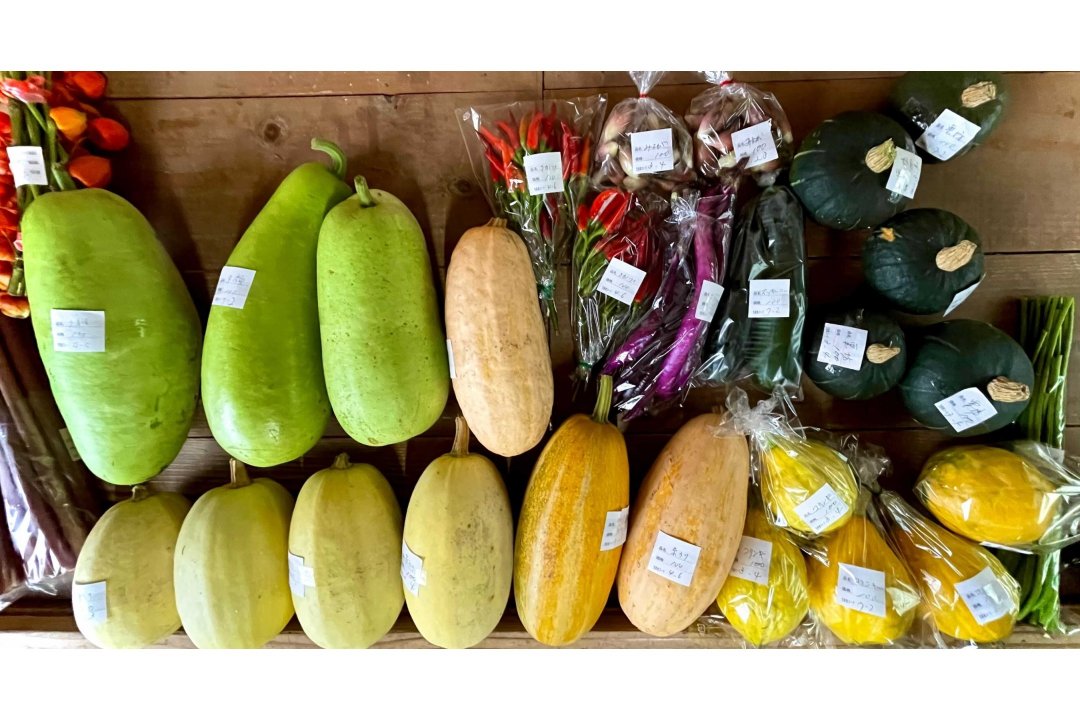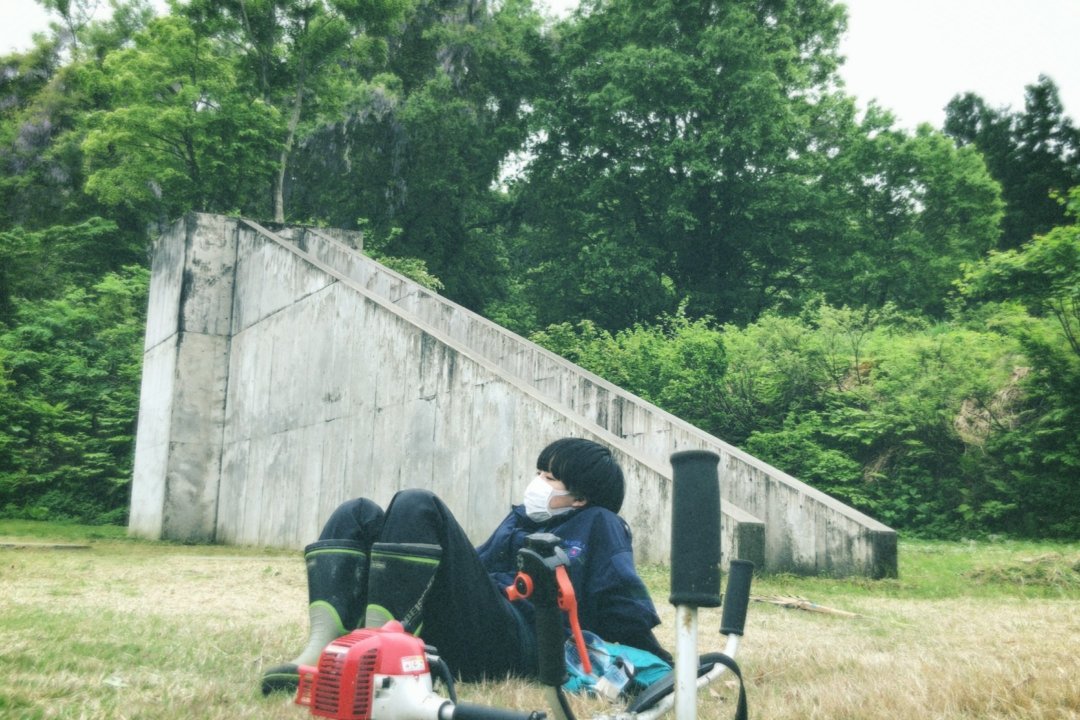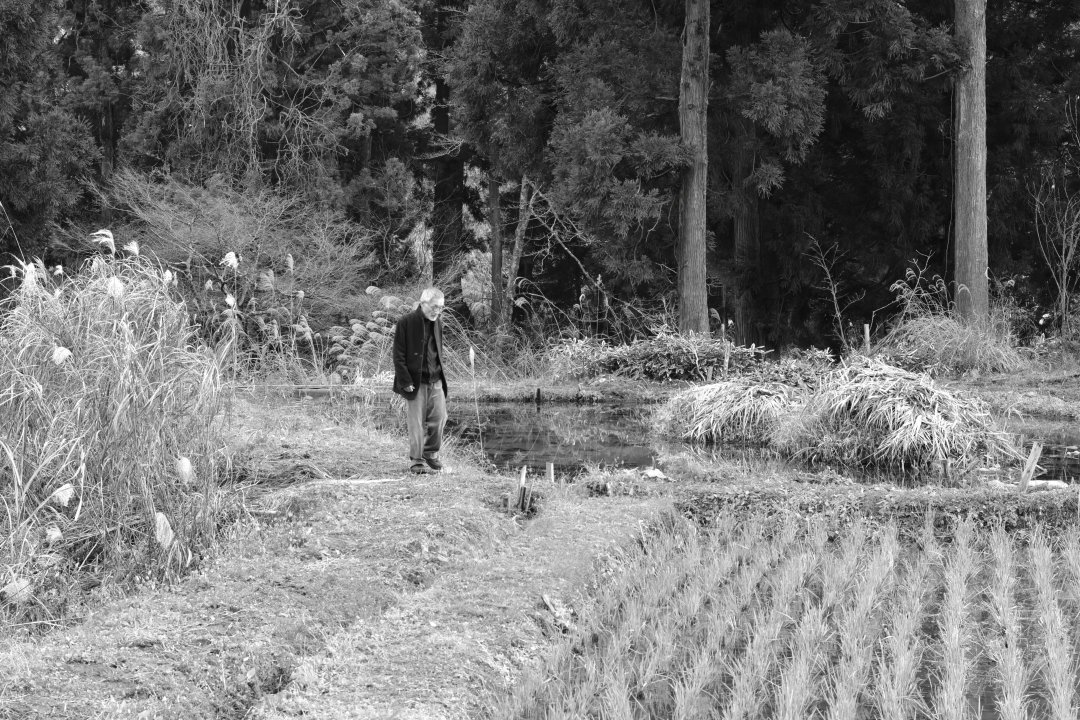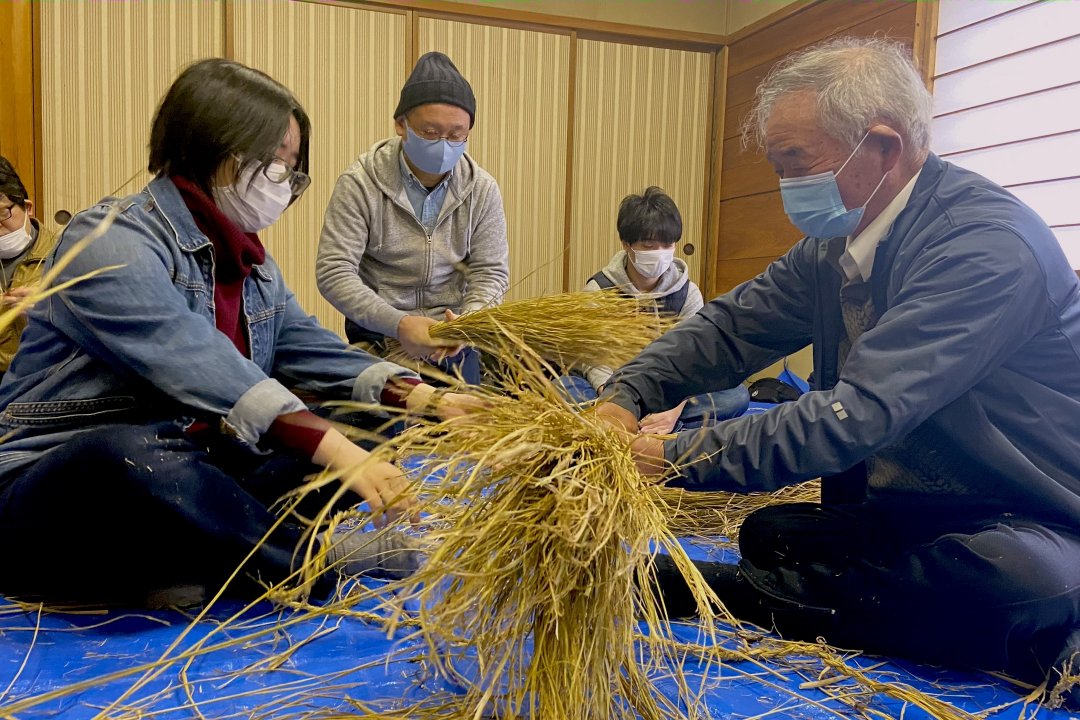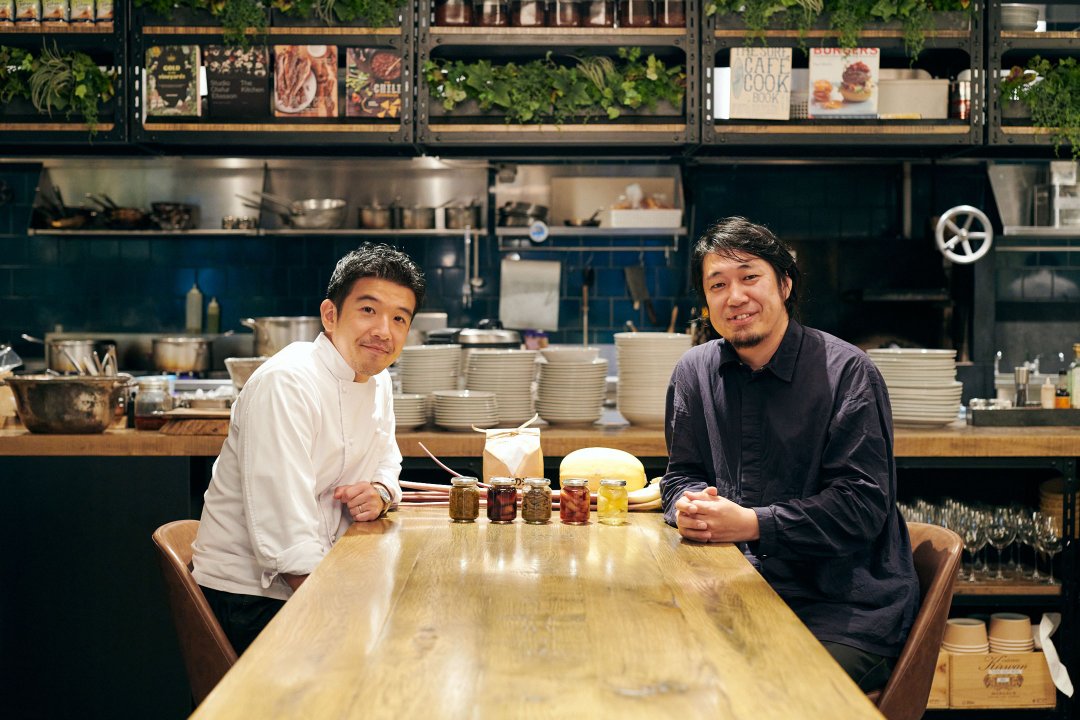Thinking 21st century art in the world from Niigata
Echigo-Tsumari Art Field - Official Web Magazine
Feature / VISITING ECHIGO-TSUMARI WITH HER, VOL.6-1
Follow the trail of a primitive journey by KOM_I of Wednesday Campanella: Returning to the earth in the present era that lost its roots
KOM_I (Singer / Artist)
KOM_I, known as a singer of the music unit called Wednesday Campanella recently released a work of music and projected image which was created during their stay in Yakushima Island as well as started acting career. Let's follow her trail of a primitive journey in Echigo-Tsumari.
Text by NAKAJIMA Haruya, Photo by MAEDA Tatsu, Text & edit by MIYAHARA Tomoyuki / KAWAMURA Kei (CINRA.NET editorial team)
08 October 2020
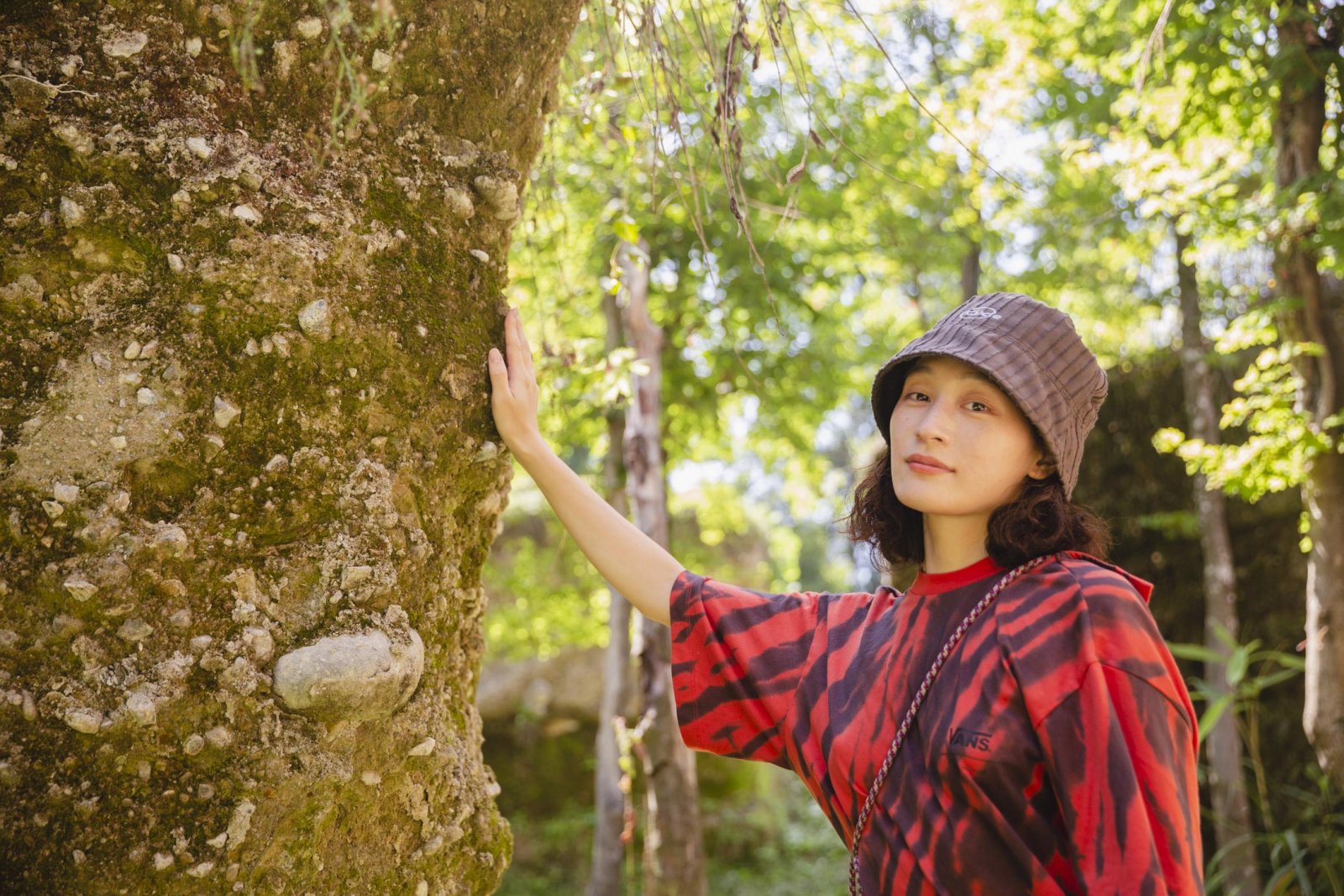
"Traces of memory and forest of tomorrow": A sumo wrestling ring where the holy spirit decesends on

KOM_I
KOM_I visited Echigo-Tsumari in winter when she was a high school student and stayed overnight at House of Light by James Turrell. Back then she was enthused by making a gigantic snow hut (“kamakura”) using snow fell on and piled up in the garden. When completed, she even made a whole on the ceiling and pretended to be “Turrell”. The places she is going to visit on this occasion include artworks she is yet to see.
The first stop was “Traces of memory and forest of tomorrow” by KUNIMATSU Kineta who is based in Hokkaido. The artwork was created in 2018 and has become one of the permanent collections. “Looks like a mistery circle” was the first remark she made as she started to speak.
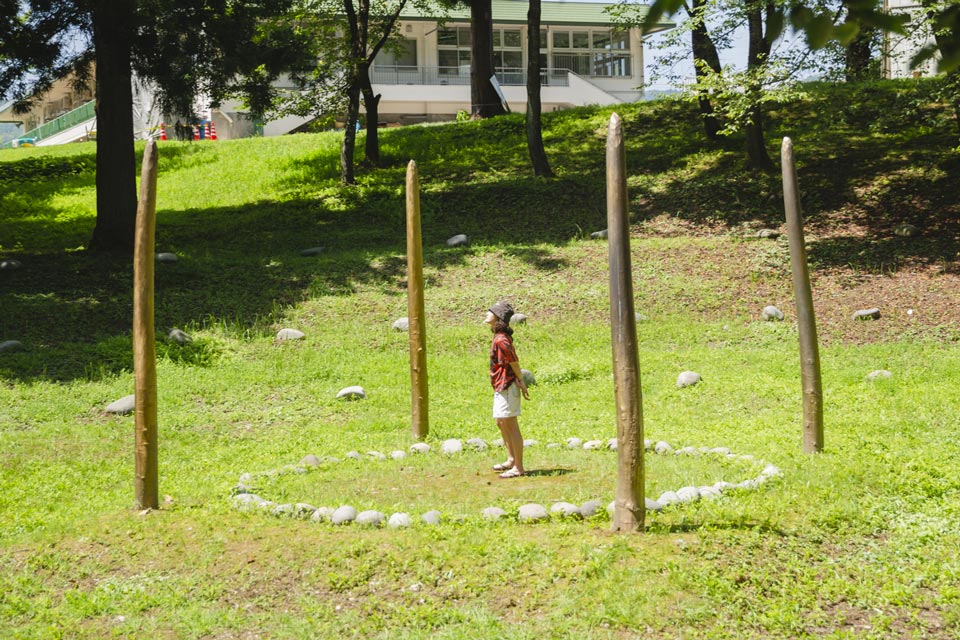
“Traces of memory and forest of tomorrow” by KUNIMATSU Kineta
“Traces of memory and forest of tomorrow” (2018)
Senju Shrine where the artwork is installed used to host Sumo wrestling, a ritual to pray for good harvest and sound health until 1997. Inspired by the photographs captured the scene of such ritual, KUNIMATSU attempted to restage such lively scene by installing four golden columns on the ring and pebbles from the river representing audience which were done in collaboration with locals. 。
“Traces of memory and forest of tomorrow”
*Please visit the official website for opening hours and how to get here prior to your travel.
KOM_I: I would say “four columns” is distinctively Japanese motif. These columns can be yorishiro for spirits to decsend to the ground. Activities for “hare” occasions such as sumo and festivals must have taken place in a place where spirits and we (humans) can interact with.
Singing and dancing are also such activities. When I am giving live performance, I do have moments I find myself in “tube”. I feel sense of immersion as if everything freely moves on. I believe that is the status of “the spirits have been descended”.

Looking into the sky as surrounded by four columns.
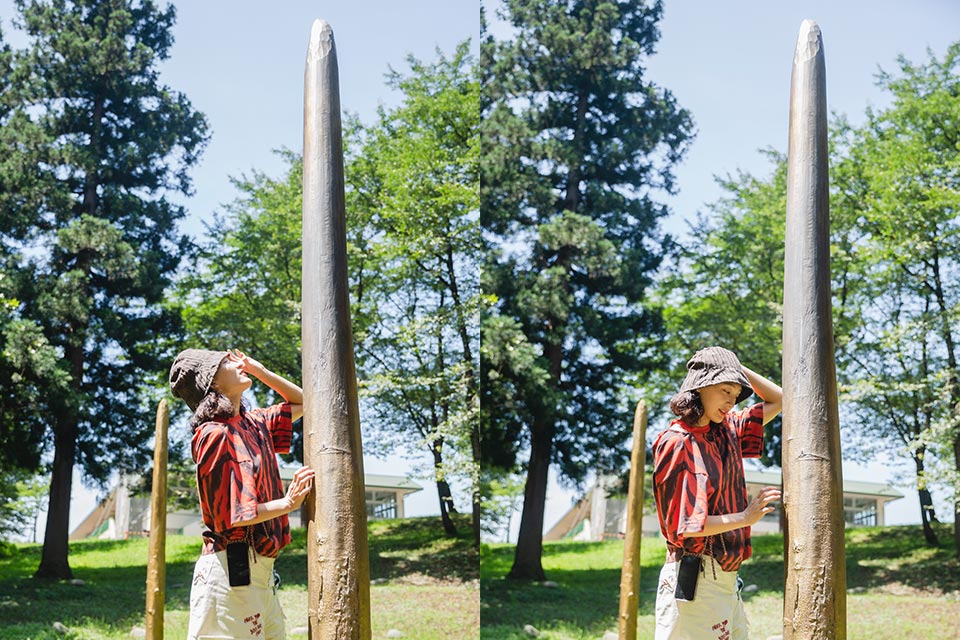
As she touches the columns…..
The space for delicately sumo wrestling match behind the Shrine looks exactly like a stage for live music performance or a theatre. KOM_I says “I would love to perform live concert here.”
KOM_I: I enjoy being in the corn-shaped space. Stage often sits in the elevated position in relation to the audience. However, you are standing at the lowest point in the corn-shaped theatre setting. Such stage is challenging but exciting. Nippon Budokan is one of them.
It is easier to impress if you stands higher to the audience but it is hard to be even heard by them if you are calling from the lowest point. You rather have to cause a whirlpool of energy and draw audience to yourself. Imagine a strong “pulling force” and that makes you to be the centre of attention – it is, I would say, like an ant-lion.
KOM_I realised the columns were actually metal objects that reproduced the texture of a tree as she tapped them. She started to beat out a rhythm as if she does so with percussion and filled the space with sound.
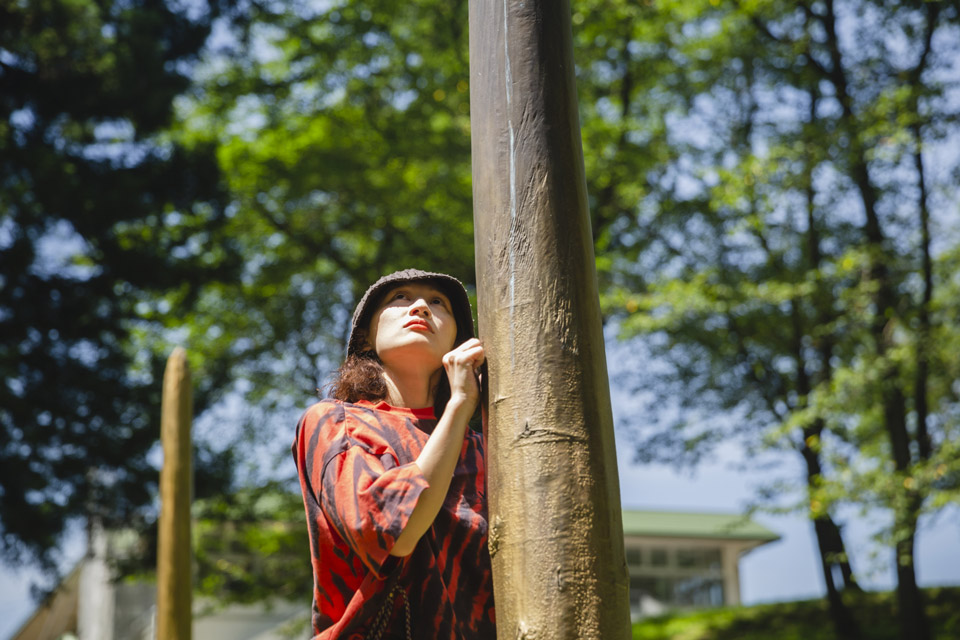
Beating out a rhythm like playing percussion. KOM_I seemed to be filled with joy saying “this is like a gamelan, an Indonesian percussion instrument”.
"Ubusuna House" where Ubusuna-gami, the god of yao yorozu no kami (eight million gods) dwell.
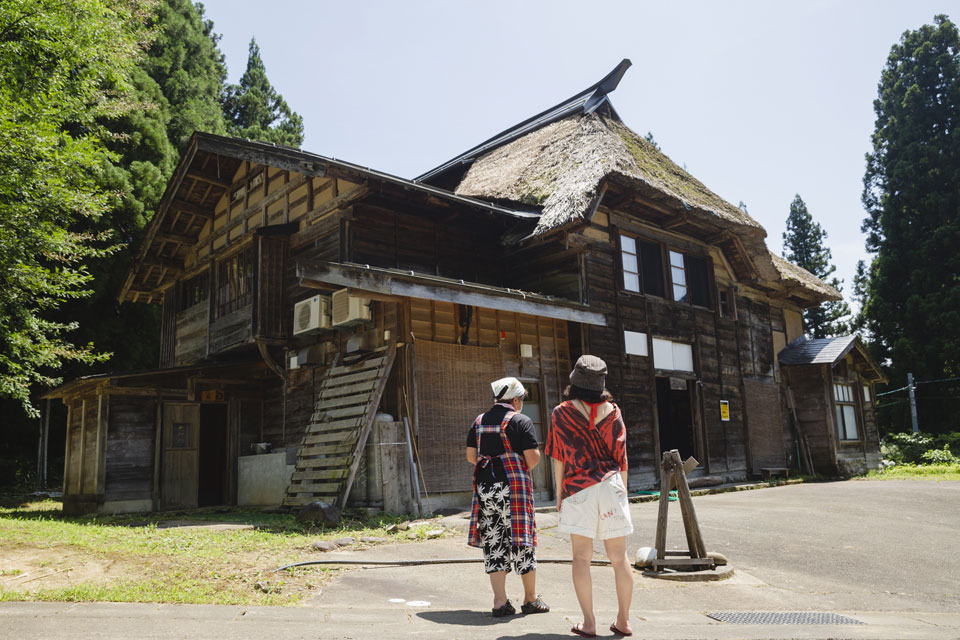
Ubusuna House
The next stop was at “Ubusuna House” a renovation of an old minka house built in 1924 through potteries and local cuisine. The warm wooden house has hearth, cooking stove, basin and bath tub created by prominent Japanese potters and visitors can enjoy local cuisine served in the plates and bowls by potters.
Ubusune House opened in 2006 responding the theme “earth” as a restoration from Niigata Chuetsu earthquake in 2004.
“Ubusuna House” (2006)
Ubusuna House is a renovation project of an old minka house of Echigo-Chumon-zukuri, built in 1924 with a thatched roof. Using potteries such as hearth, cooking stove, basin and bath tub created by prominent potters across Japan, the old house was transformed into a restaurant on the ground floor and three tea rooms on the upper floor. Visitors are welcomed by local villagers who grow vegetables, cook them and serve at the restaurant. The project was directed by IRISAWA Yoshitoki, the editor-in-chef of a potter magazine called Tojiro whereas the renovation of the hose was supervised by ANDO Kuniyasu, the researcher of wooden houses.
*Please check the website above for opening dates and hours prior to your visit.
Shizuko-san (Mrs Mizouchi), leading person of the group of locals who runs Ubusuna House welcomed and showed KOM_I around. Shizuko-san was pleasantly surprised when KOM_I asked “Ubusuna is an ancient god, isn’t it? I seem to remember Orikuchi Shonobu wrote about Ubusuna-gami.”

It didn’t take long for two of them to get along. KOM_I learnt about the history of the house from Shizuko-san.
The large cooking stove with distinctive pattern of crows at the entrance is Oribe ware by an Aichi-based potter Suzuki Goro. KOM_I had never seen a stove with funnel and said with excitement that “look at these little crows. They look so charming as if they are in the eyes of skeleton!”
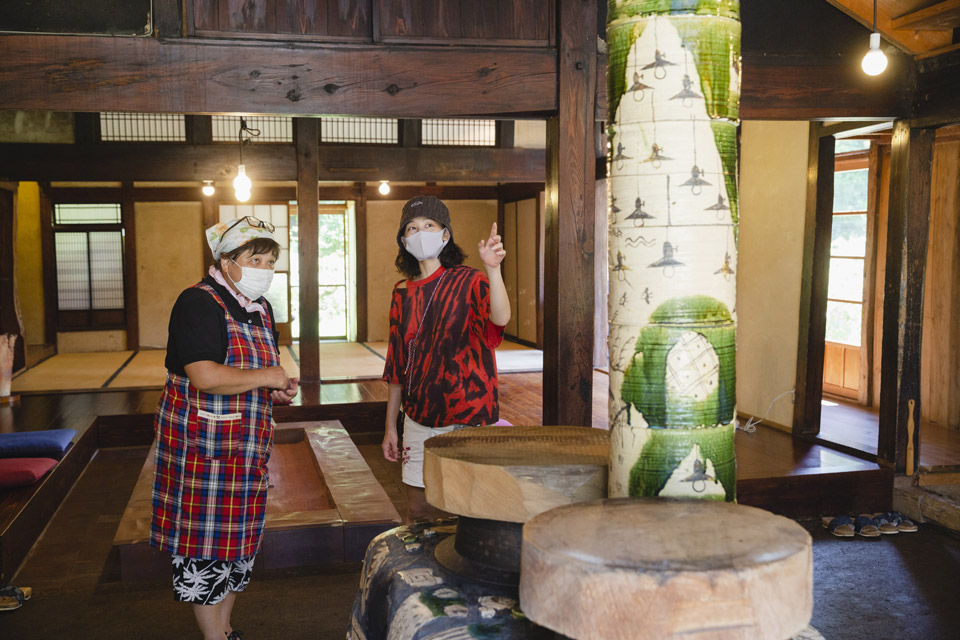
KOM_I was so curious about the patterns on the stove. “With these joints, this funnel reminds me of Daruma-otoshi (wooden blocks vertically stacked up for knocking down)”.
As walking upstairs, you find three tea rooms which used to be space for sericulture including “tea room of darkness” with bent-root Japanese ceders floor, “tea room of wind” for sleeping over and “tea room of light” with washi-paper wall. KOM_I curiously peeped into the attic behind the steps which also functioned as drawers.
Reaching to the attic as she climbed up the staircase-drawers.
Looking closely precious tea set by Suzuki Goro in the tea room of light.
Bathing in the Shigaraki-yaki bath.
A long-awaited lunch was a set meal filled with local ingridients including Botenmaru, a slow-cooked whole aubergine, Kanpyo, a dried bottle gourd, home-made konnyaku made from locally grown potato as well as Tsumari-pork as main dish and rice from a local terraced rice field.

Tsumari pork served with various local vegetables. “Rice is extraordinary delicious” KOM_I was so surprised.
KOM_I: Personally I enjoy more of “pre-cooking phase” than cooking itself. I love looking after the field. I am interested to learn “how things grow”. I am impressed with locals who knows everything about anything – like a walking dictionary. I could visualise the local landscape from the past as I hear stories they told me. “

She was keen on local vegetables as she enjoyed lunch saying “haven’t heard about noodle-like pumkin for long time”, or “flowers of konnyaku potato is scary.”
The restaurant is managed by vivid local ladies with lovely smiles. “I am so happy to have met such a beautiful girl. Look at how beautiful she is!” said Komiyama Matsuno-san. KOM_I also complimented the mask that Matsuno-san was wearing in return.

Second from the left is Matsuno-san (Mrs Komiyama). They enjoyed conversation about life in the village as well as how she met her husband.
Recurring life and death: "The placenta - Misyaguchi"
“The placenta – Misyaguchi” was also created in 2006 by Furugori Hiroshi, not too far from “Ubusuna House”. Represented by “placenta” which protects fetus, it is a sacred and calm space surrounded by earth. KOM_I was welcomed by a snake as if it suggested something. “Feeling very relaxed” said KOM_I while she was inside where she could here nothing but the sound of nature.

“The placenta – Misyaguchi” by FURUGORI Hiroshi
“The Placenta – Misyaguchi” (2006)
The artist attempted to “give a shape to “a sign of the place” in Ganyu village which had a different rythm of life to the centre of city, located at the northern tip of Tokamachi-city with only five households. The site was finally decided at 40 days to the opening of the festival and the original plan would have never managed to complete the work in time within the number of people needed. The artwork was created by It is a work made by an innovative construction method devised by local carpenters through trial and error. As “placenta”, the protection of fetas represents, the artist created a sacred and calm space surrounded by soils which feels like being embraced.
*Please visit the website and check opening dates and hours prior to your visit.
KOM_I: It looks like a ruin where religious rituals were conducted. I find it fastinating it is made of trees, earth and stones – somewhat very Japanese materials which are perishable and ephemeral.
Usually, one would wish that an artwork will last for hundreds and thouthands of years but it may well be slightly allogant. The artist may have thought that “we are living now and the work can dissapear as a part of the cycle of such life.”
It has been long time since ETAT started in 2000. I wonder how artworks have been accepted as time goes by. While the artists may not be able to attend their works for long time, the artworks must have become integrated into the respective places and locals would begin to relate themselves to these works as their own. I think how the works are received is a crucial point.

Standing for a while as she touched the earth-wall covered with moss.
KOM_I had been thinking about placenta consisting of membrace and placenta wrapping a fetus for a while.
KOM_I: Sometimes a baby is born as she breaks a membrace of the placenta. It is a fortunate event as the placenta is a sacred thing which protects you when travelling from the other world to this world. I have visited a shrine in Suwa with “placenta faith” with Nakazawa Shinichi, a religion scholar.
There is also a theory that “Mishaguchi” means the god of stone, “Shakujin” which was also callled “Shukujin”. “Placenta” and “Mishaguchi” both means “accommodate something”. I heard that both “The Placenta – Misyaguchi” and “Ubusuna House” were created in the same year under the theme of “earth”. “Ubusuna” also means “conceive” and “giving a birth” which relates to this work – and make all sense.
I feel like I am tracing back in time for the ten months which was spent in my mother’s belly as I walk around the circle in this work. Looking from distance, the upper part of the work are round like a belly. It also reminds me of an ancient tomb – which is a grave. It is a magnificent work if it represents both to dye and to be born in one place.
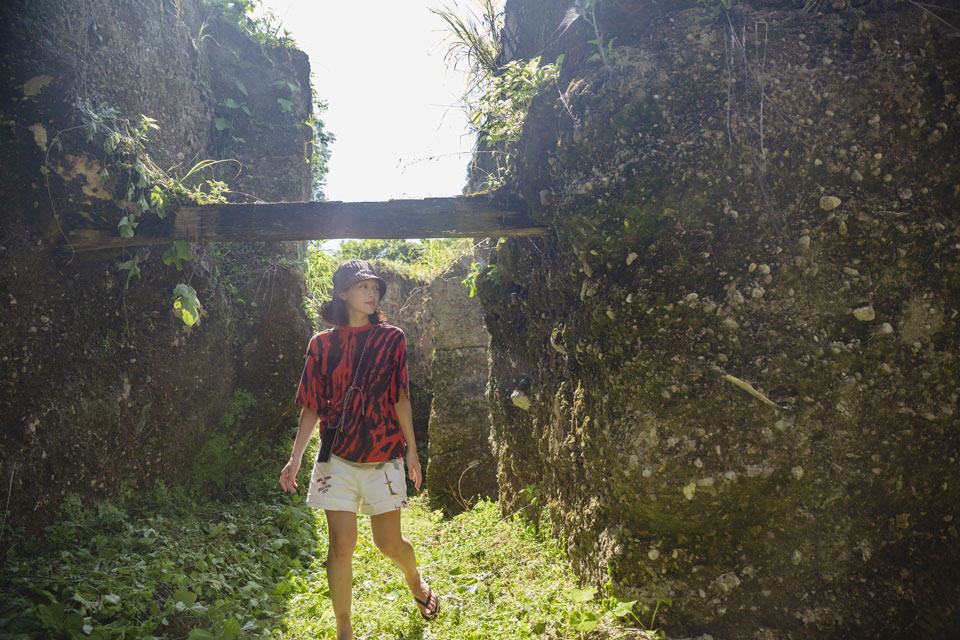
Walking around the circle inside the work. “It looks like a grave in Okinawa”.
The reason why KOM_I has deep appreciation of myth and history is because she looks into history and stories of a place as she compose pieces of music.
KOM_I: There is a moment that a story makes sense to me as I pick up and connect things that occur to my mind through such research. What comes out of such process is my work. I wonder if it is somewhat similar to create an artwork.
As “art festival” has taken root in Japan as a method, more artists create works based upon the history of respective sites which are then viewed by audience. What is in common amongst people in the present time is the sense of “lost one’s own roots”. I guess, this is why people have a desire to return to “earth” and “put their feet on ground”.
Many of us may unconsciously feel that we have forgotten something important as we live in highly informed and convenient environment. The primitive works in Echigo-Tsumari invite us to return to trees, soils and womb and give us an opportunity to review where we stand.
The journey with KOM_I continues on.
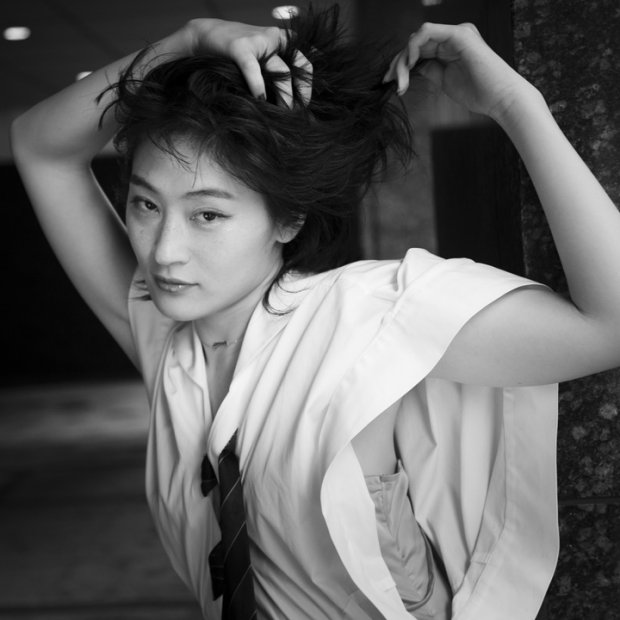
Profile
KOM_I
Singer・Artist. Born in 1992, grew up in Kanagawa prefecture. Invited to join musical activities when she attended a party at friend’s house. As a vocalist of “Wednesday Campanella”, KOM_I performs at music festivals both in and outside Japan, tours around the world and creates live performances that engage with and respond to places she visits and people she meets. She likes southern Indian food and enjoys visiting local rituals and festivals across the globe and learning singing and dancing. In addition to musical activities, she also expands her horizon working as fashion model as well as a narrator. In April 2019, she released “YAKUSHIMA TREASURE”, an EP created with an inspiration from Yakushima, produced by OORU TAICHI.
< Continue to Sequel >
KOM_I ( Sequel )
Coming soon







